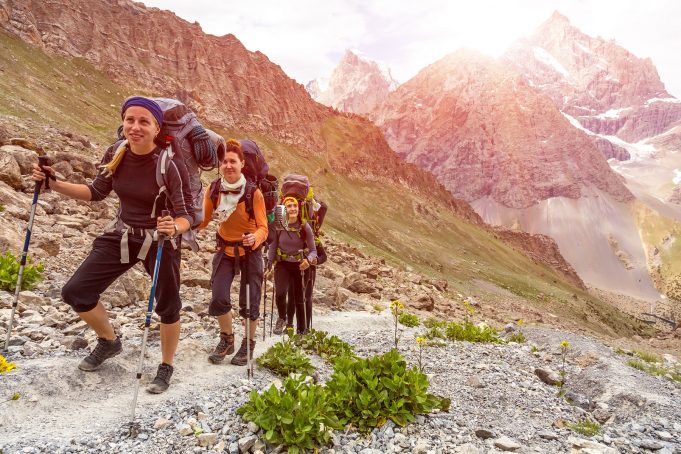Responsible Trekking Part I
There is no grander offering than The Great Outdoors. Sure, adventure tourism is no new phenomenon, but the integration of technology and reach of the Internet is popularizing it exponentially (even as you read this).
Having been born into loud, polluted, crowded cities and a ruthless rat race, we can’t help that our default settings are set at ‘GO, GO, GO!’ We tend to carry this unnatural energy, or pace, to the outdoors as herds of people flocking to the top of the hill without a pause, or second glance, for that which surrounds.
It is important to break away from this ‘herd mentality’ and engage with the outdoors in an interactive, educative and responsible way, for the sake of your own safety and so we can contribute to sustain these ancient, timeless environs so they may outlive us all.
Here are some suggestions to practice responsible trekking:
The basics
- Suitable location, trail and local handler: Thorough research and groundwork should be the basis for choosing a suitable location and trail. If you are venturing into unknown territory, it is wise to employ the services of a local handler to take you around.
- Group size and limitations: Ensure the group size is conducive to what you’re looking to achieve; it is ideal for all members to share the same vibe. Once you know who all are going, get a general idea of any physical or mental limitations such as a phobia of heights, respiratory conditions, recent accidents injuries, handicaps and so on. Keep the group size manageable.
- Food and water: This is key. Carry sufficient (remember everybody gets ten times more hungry and thirsty when trekking) rations and drinking water. Choose nourishing, high-energy snacks like fruits or dry fruits over empty calories.
- Plan for the season: Based on the months you are visiting, find out what the typical climatic conditions will be and pack accordingly. You don’t want to be stuck without a raincoat in a tropical torrential downpour, or carry a bulky sweater while the sun shines all through. The clothes on your back constitute shelter in many ways; think it through.
- First-aid kit: This is a must-have. The basics to include are paracetamol, anti-allergens, painkillers, band-aids, crepe bandages, cotton, and anti-septic. Again, do a quick check to understand the group’s medical needs. Make sure everybody knows their blood groups, it is (unbelievably and incredibly) common for some to live out an entire lifetime without the slightest clue as to what type blood runs through their veins!
- Base camps: Locate and identify your bases and make sure to pace yourself accordingly while trekking. Bear in mind that you have limited daylight hours. Always aim to make it to base camps before sun down.
- Torch, shoes, water bottle: These are non-negotiable and there can be no sharing, either. Organize 1 to 2 liters for each or a large collective source of water. It is wise to put together a GO-TO emergency kit with first aid, water bottles, ropes, lighter, minimum quantity of fuel and a multi-tool.
- Connectivity: Make sure you have at least one sim card with basic connectivity even in remote areas. In the south of India, BSNL has – time and again – proven to be the savior of emergencies.
- Identification: All members must carry some form of identification at all times.
More next time, in Responsible Trekking Part II, on ethics and practices.
**Please note that this article has been written with casual hiking in mind, and does not cater to high-altitude trekking, mountaineering and/or long duration camping.















































